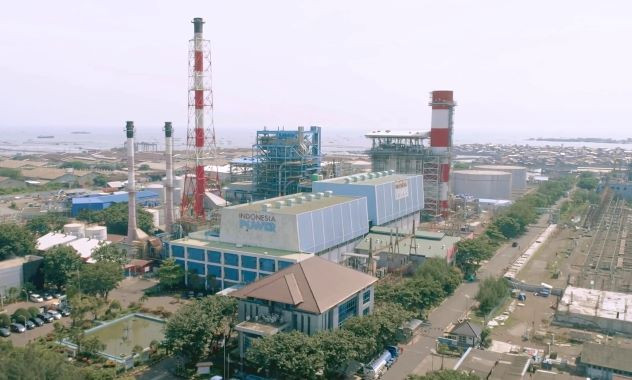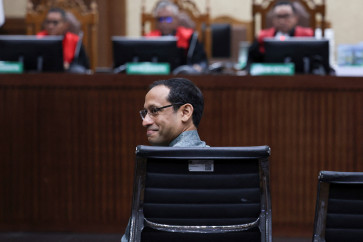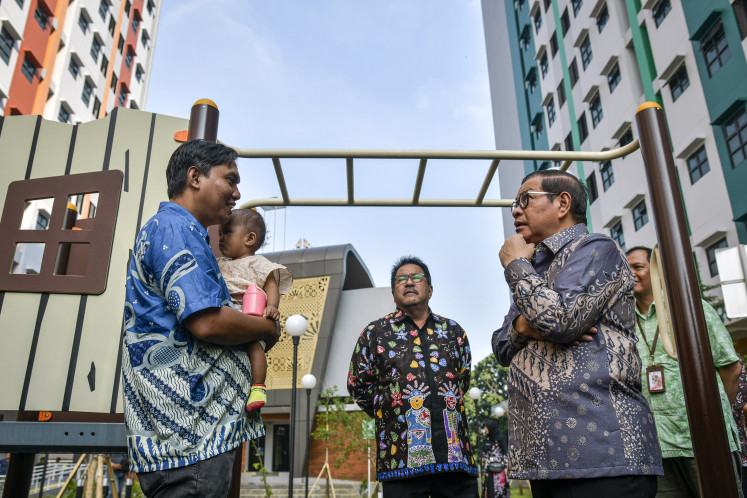Popular Reads
Top Results
Can't find what you're looking for?
View all search resultsPopular Reads
Top Results
Can't find what you're looking for?
View all search resultsWhy carbon utilization key to Indonesia’s decarbonization
The current market for CO2 reuse is small but growing rapidly, with industry players increasingly looking to leverage captured CO2 for the broad range of products it can be used to produce.
Change text size
Gift Premium Articles
to Anyone
A
s energy demand—bolstered by rapid economic development— surges in Asia, countries in the region are increasingly searching for investments that will allow them to balance energy needs with their decarbonization goals. Amongst them, Indonesia has announced ambitions to achieve carbon neutrality by 2060.
Toward that goal, Indonesia has begun promoting biofuel and ethanol as renewable energy sources. Nationwide implementation of the Biodiesel Mandate (B35) program in 2023, which requires the blending of 35 percent biodiesel derived from palm oil with 65 percent conventional diesel fuel in transportation and industrial sectors, is one such example.
State oil and gas company Pertamina’s 2023 launch of a new gasoline product containing a blend with 5 percent ethanol, derived from domestic sugarcane, in Surabaya is another such initiative.
Yet efforts to date have been insufficient to meet energy transition goals, given escalating energy demand. Implementing multiple decarbonization strategies in the near future will thus be crucial to support Indonesia’s net-zero transition.
One emerging strategy, that has gained traction in Indonesia and Malaysia, is the investment in technologies to capture and store carbon, known as carbon sequestration.
Within Asia, Indonesia has taken the lead in its bid to become the region’s hub for CO2 storage, with up to 128 prospective basins to be explored, among which 20 are already in use. These include nationwide initiatives such as research and development by the Indonesian Institute of Sciences Research and Indonesian Ministry of Energy and Mineral Resources into geological sequestration technologies and policy analyses, and pilot projects like the Indonesia CCS (INC3) project that captures CO2 emissions from the Jawa 7 coal-fired power plant and stores them underground.
Following the issuance of Presidential Regulation No. 14/2024, the government is also preparing to implement regulations that will support the proliferation of more carbon sequestration projects. Government-to-government partnerships have also been initiated with countries like Australia, Japan, and the United States, which have expertise in geological sequestration technologies, policy development, and project implementation.
In all, Indonesia’s current initiatives have focused on building carbon storage capacity, which is understandable given the country’s abundance of reservoirs and saline aquifers.
However, the expansion potential for carbon sequestration faces challenges, including scarcity of storage sites, and high transport and long-term maintenance costs. For industrial processes that produce CO2 streams with relatively lower CO2 concentrations, traditional carbon sequestration methods to concentrate, liquefy, and transport CO2 may not be as cost-effective or practical.
Combined with the carbon reduction required to achieve carbon neutrality, especially across the industrial sector, alternative uses for captured CO2 need to be explored.
To mitigate these challenges, there exists another pathway alongside carbon sequestration— the transformation of captured CO2 into valuable materials, or CO2-to-X. Captured CO2 can act as a source of carbon for industrial materials, providing the molecular backbone for construction materials, chemicals, and fuels among other possibilities.
CO2-to-X technologies can potentially use recycled CO2 to replace more carbon-intensive feedstock, helping to reduce an activity’s emissions. It also serves as a more cost-effective solution than carbon sequestration, given limited geological storage and particularly for processes that produce CO2 streams with lower CO2 concentrations.
With its early steps into initiating international partnerships and developing regulatory frameworks for carbon-capturing projects, Indonesia is well-positioned to make the evolution from capturing CO2 to reusing it.
The current market for CO2 reuse is small but growing rapidly, with industry players increasingly looking to leverage captured CO2 for the broad range of products it can be used to produce. This includes industrial use, such as construction materials, specialty materials or direct industrial use as commodities; chemicals, for example, polymers, plastics, resins, and fertilizers; synthetic fuels; and other bio-based food or medical products.
A promising application of reused CO2 in construction materials is in the manufacture of finished concrete, which involves injecting CO2 instead of water or steam into fresh concrete. Adding CO2 reduces the amount of cement (which is highly carbon-intensive to produce) in the concrete mix, thus reducing the overall carbon intensity of concrete.
Another process involves reacting CO2 with waste feedstock to produce building aggregates or sand. CO2-based aggregates provide strength and durability comparable with traditional aggregates, and their performance in construction applications is similar to conventional products. They also offer high carbon abatement potential, including the volume and permanence of carbon retention.
Additionally, this approach provides an effective waste management solution by utilizing industrial waste as feedstock, reducing the reliance on traditional raw materials, and promoting a circular economy approach.
Despite growing enthusiasm, collective financial commitment to CO2-to-X technologies remains modest compared with recent clean technology investments in electric vehicles and batteries. Although Asia presents strong potential for CO2-to-X adoption, most companies and governments in emerging Asia are still adopting a wait-and-see attitude.
For CO2-to-X initiatives to contribute significantly to Indonesia’s decarbonization journey, increased international cooperation and participation from the private sector will be required, similar to what has driven the scaling of renewable energy.
Ultimately, the utilization of CO2 should be regarded as a supplementary measure, rather than a substitute for CO2 storage or direct reductions in businesses’ carbon footprint. While CO2-to-X initiatives may not yield emission reductions of a comparable magnitude in the near term, they can still contribute to the successful attainment of Indonesia’s climate objectives when implemented as part of a comprehensive decarbonization strategy.
***
Abhi Bhuchar is head of energy and natural resources, Asia Pacific at Oliver Wyman, where Eddison Lee and Jerome Tan are principals of energy and natural resources. Jessica Ong, senior consultant at Oliver Wyman, contributed to the article.










